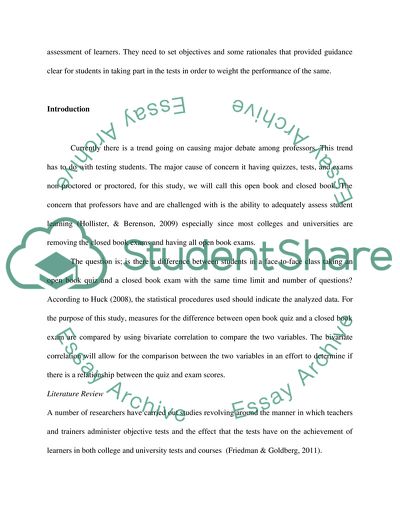Cite this document
(The Differences that Exist between Face-to-Face Students and Those of Research Paper Example | Topics and Well Written Essays - 2250 words, n.d.)
The Differences that Exist between Face-to-Face Students and Those of Research Paper Example | Topics and Well Written Essays - 2250 words. https://studentshare.org/statistics/1837319-is-there-a-difference-between-students-in-a-face-to-face-class-taking-an-open-book-quiz-and-a-closed-book-exam-with-the-same-time-limit-and-number-of-questions
The Differences that Exist between Face-to-Face Students and Those of Research Paper Example | Topics and Well Written Essays - 2250 words. https://studentshare.org/statistics/1837319-is-there-a-difference-between-students-in-a-face-to-face-class-taking-an-open-book-quiz-and-a-closed-book-exam-with-the-same-time-limit-and-number-of-questions
(The Differences That Exist Between Face-to-Face Students and Those of Research Paper Example | Topics and Well Written Essays - 2250 Words)
The Differences That Exist Between Face-to-Face Students and Those of Research Paper Example | Topics and Well Written Essays - 2250 Words. https://studentshare.org/statistics/1837319-is-there-a-difference-between-students-in-a-face-to-face-class-taking-an-open-book-quiz-and-a-closed-book-exam-with-the-same-time-limit-and-number-of-questions.
The Differences That Exist Between Face-to-Face Students and Those of Research Paper Example | Topics and Well Written Essays - 2250 Words. https://studentshare.org/statistics/1837319-is-there-a-difference-between-students-in-a-face-to-face-class-taking-an-open-book-quiz-and-a-closed-book-exam-with-the-same-time-limit-and-number-of-questions.
“The Differences That Exist Between Face-to-Face Students and Those of Research Paper Example | Topics and Well Written Essays - 2250 Words”. https://studentshare.org/statistics/1837319-is-there-a-difference-between-students-in-a-face-to-face-class-taking-an-open-book-quiz-and-a-closed-book-exam-with-the-same-time-limit-and-number-of-questions.


